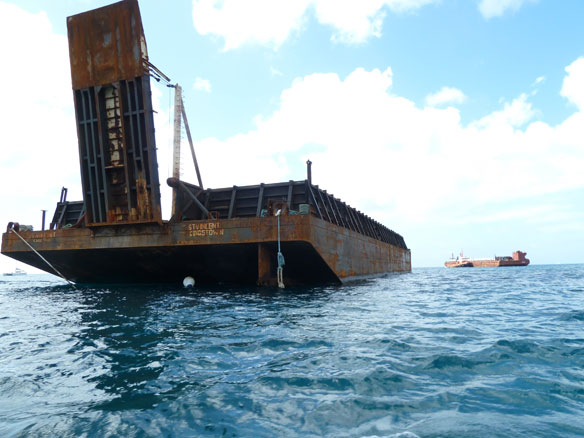Sand barge. Photograph: © SAF — Coastal Care
Saint Eustatius is immediately to the northwest of Saint Kitts, and to the southeast of Saba. Formerly part of the Netherlands Antilles, Sint Eustatius became a special municipality of the Netherlands on 10 October 2010.Together with Bonaire and Saba it forms the BES islands.
Excerpts;
In recent years, large scale sand-mining, which is banned in St. Eustatius, has taken place at Zeelandia beach. Although efforts were made to block vehicle access to the beach, individuals have, through the removal of vegetation, created a path in between the sea grapes to drive onto the beach…
Read Full Article, The Daily Herald (07-03-2020)
World Consumes 100 Billion Tons of Materials Every Year, Report Finds; Yale E360 (01-24-2020)
Demand for sand: the largest mining industry no one talks about; Inhabitat (05-23-2019)
The world’s largest and perhaps most destructive mining industry is rarely discussed. Approximately 85 percent of all material mined from the earth is a simple and widely available resource: sand. Because it is so cheap and readily available, it is mined by everyone from guy with a shovel, to multi-million dollar machine operations.
Sand, Rarer Than One Thinks: A UNEP report (GEA-March 2014)
Despite the colossal quantities of sand and gravel being used, our increasing dependence on them and the significant impact that their extraction has on the environment, this issue has been mostly ignored by policy makers and remains largely unknown by the general public.
In March 2014 The United Nations released its first Report about Sand Mining: “Sand, Rarer Than One Thinks.”
“Sand Wars” film documentary by Denis Delestrac – first broadcasted on the european Arte Channel, May 28th, 2013 in its french version: “Le Sable: enquête sur une disparition”, where it became the highest rated documentary for 2013 – expressly inspired the United Nations Environment Programme (UNEP) to publish this 2014-Global Environmental Alert.









